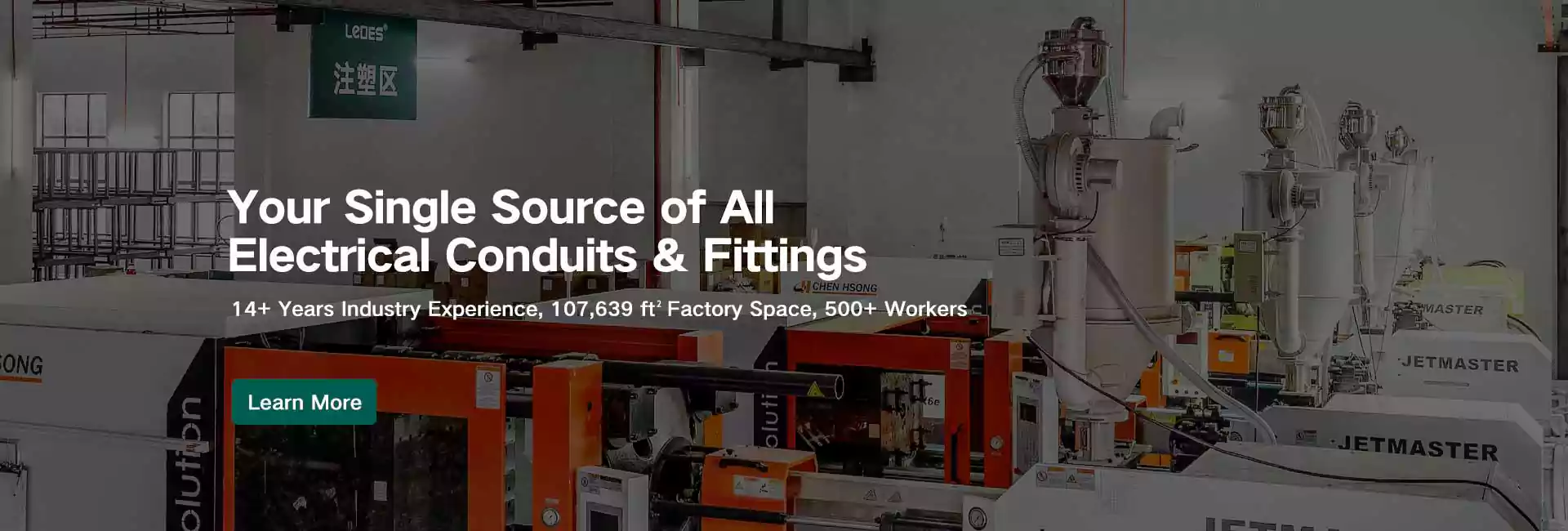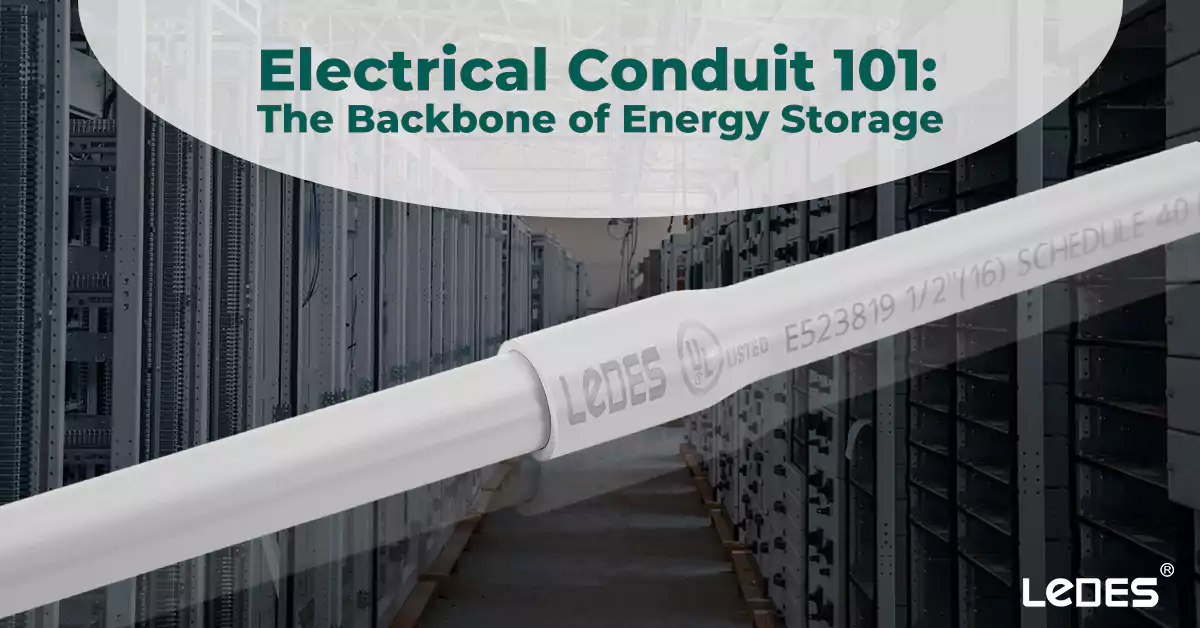
목차
오늘날 급속도로 발전하는 에너지 환경에서 에너지 저장 시스템(ESS)은 전력망 안정화, 재생 에너지 지원, 그리고 안정적인 백업 전력 확보에 필수적인 요소가 되었습니다. 하지만 안전하고 효율적이며 복원력이 뛰어난 모든 에너지 저장 시설의 이면에는 종종 간과되는 중요한 구성 요소, 바로 전기 배선이 있습니다.
전기 도관은 에너지 저장 시스템에 전력을 공급하고, 모니터링하고, 제어하는 배선을 보호하고 안내합니다. 하지만 단순히 도관을 설치하는 것만으로는 충분하지 않습니다. 엄격한 전기 도관 규정에 따라 도관을 선정, 설치 및 유지 관리해야 합니다. 미국의 NEC(National Electrical Code), CEC(Canadian Electrical Code), 호주와 뉴질랜드의 AS/NZS 3000, 그리고 국제 IEC 표준과 같은 이러한 규정은 도관 시스템이 최고의 안전, 성능 및 규제 기준을 충족하도록 보장합니다.
이 가이드는 전력 저장에서 전기 도관이 차지하는 중추적인 역할을 살펴보며, 다양한 규정과 표준이 도관 선택 및 설치에 미치는 영향을 중점적으로 다룹니다. ESS를 설계, 설치 또는 검사할 때 관련 도관 규정을 이해하는 것은 규정 준수와 장기적인 시스템 성공을 위해 필수적입니다.
에너지 저장 시스템이란?
에너지 저장 시스템(ESS) 에너지 저장 시스템은 나중에 사용하기 위해 에너지를 저장하는 기술입니다. 이러한 시스템은 소규모 가정용 배터리 설치부터 대규모 그리드 규모 설비까지 다양합니다. 일반적인 에너지 저장 시스템(ESS) 유형에는 리튬 이온 배터리, 흐름 배터리, 납축전지, 그리고 고체 배터리 및 수소 저장과 같은 신기술이 포함됩니다. 각 시스템 유형은 안전성, 확장성 및 전기적 복잡성 측면에서 특정 요구 사항을 충족해야 합니다.
전기 도관 이해
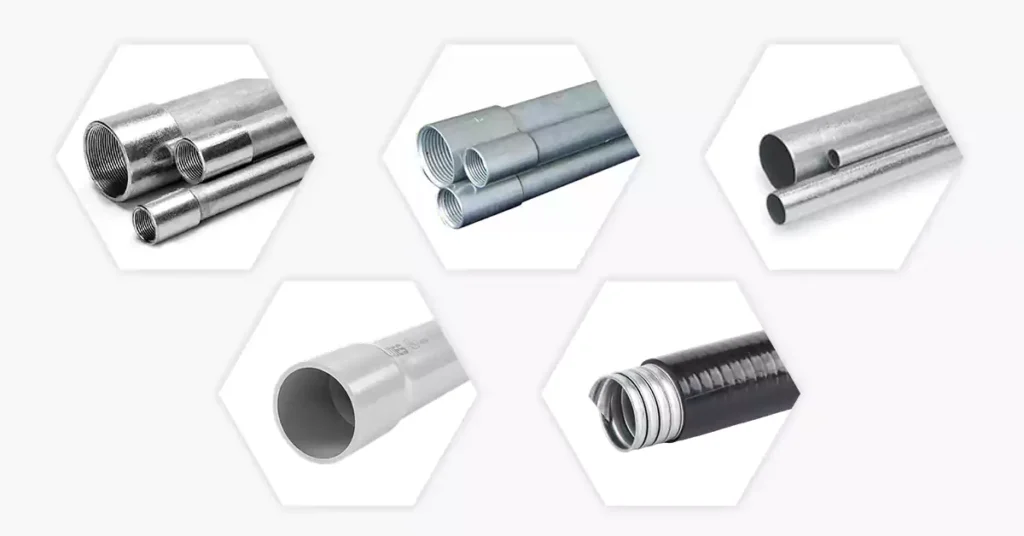
전기 도관은 본질적으로 전기 배선을 보호하고 배선하도록 설계된 내구성 있는 배관 시스템입니다. 에너지 저장 시스템은 고전압, 고전류, 그리고 민감한 제어 장치를 포함하기 때문에 도관의 역할이 매우 중요합니다. 적절한 도관을 사용하는 것은 단순한 모범 사례가 아니라 엄격한 규정 요건이기도 합니다.
전력 저장 시스템에서 도관의 역할:
전기 도관은 전력 저장 프로젝트에서 여러 가지 목적을 갖습니다.
- 물리적 보호: 케이블을 기계적 충격, 설치류, 물, 화재 및 화학 물질 노출로부터 보호합니다.
- 체계적인 라우팅: 배선을 깔끔하게 정리하고 분리하여 유지관리, 업그레이드, 안전 검사를 더욱 쉽게 해줍니다.
- 전기 안전: 접지 시스템을 지원하고, 전기적 고장 위험을 최소화하며, 아크 또는 화재 확산을 방지하는 장벽을 제공합니다.
5가지 일반적인 전기 도관 유형
다음은 전력 저장 분야에서 일반적으로 사용되는 몇 가지 도관 유형과 그 정의, 장단점입니다.
강성 금속 도관(RMC)
RMC는 아연 도금 강철 또는 알루미늄으로 제작된 고강도 전선관입니다. 금속 전선관 중 가장 높은 수준의 보호력을 제공합니다.
장점:
우수한 기계적 강도 및 내충격성
우수한 내화성
중요한 배선에 대해 높은 수준의 물리적 보호 기능을 제공합니다.
접지 도체 역할을 할 수 있습니다
단점:
무겁고 설치가 어려움
재료비와 노동비가 더 많이 든다
적절하게 코팅되지 않으면 부식되기 쉽습니다(특히 강철 버전)
배터리 뱅크, 인버터실 또는 최대의 기계적 및 화재 보호가 필요한 야외 중요 구역과 같은 고위험 구역에 이상적입니다.
중간 금속 도관(IMC)
IMC는 RMC보다 가볍고 얇은 벽을 가진 대안이지만 여전히 강력한 보호 기능을 제공하고 유사한 안전 기준을 충족합니다.
장점:
RMC에 비해 가볍고 취급이 용이함
낮은 재료비
강도와 무게의 균형이 좋음
부식 방지 코팅 가능
단점:
RMC보다 충격 저항성이 약간 낮음
비금속 옵션보다 여전히 무겁습니다.
강력한 보호가 필요하지만 극도의 기계적 강도는 중요하지 않은 실내 또는 보호된 실외 설치에 사용됩니다.
전기 금속 튜브(EMT)
"얇은 벽" 도관으로 알려진 EMT는 가벼운 강철 또는 알루미늄 튜브로, 설치가 쉽고 많은 상업적 용도에 비용 효율적입니다.
장점:
가볍고 구부리기 쉬움
재료비 및 설치비 절감
일정 수준의 기계적 보호 제공
접지 경로로 사용할 수 있습니다
단점:
RMC 및 IMC에 비해 강한 충격에 대한 저항성이 낮음
야외 또는 습한 환경에서는 추가적인 부식 방지가 필요합니다.
유연성과 빠른 설치가 우선시되는 실내 배터리 인클로저, 제어실 또는 보호 구역에 적합합니다.
강성 PVC 도관
경질 PVC 도관 습기, 화학물질 또는 자외선에 노출된 환경에서 자주 사용되는 비금속성 내식성 튜빙입니다.
장점:
우수한 내식성
가볍고 작업이 쉽습니다.
낮은 재료비
비전도성(특정 ESS 설계에 대한 추가 안전성 제공)
단점:
금속 도관에 비해 기계적 강도가 제한적임
열 이동을 위해 확장 피팅이 필요합니다.
내화성 등급이 없는 한 가연성임
지하 배선, 실외 배터리 인클로저 또는 해안 시설과 같은 부식성 환경에 적합합니다.
액체밀폐형 유연 금속 도관(LFMC)
LFMC는 유연한 금속 코어와 방수 플라스틱 재킷을 결합하여 유연성이 필수적인 환경에서 보호 기능을 제공합니다.
장점:
유연성 - 장애물을 피해 경로를 설정할 수 있습니다.
액체 및 습기로부터 보호합니다
움직이는 부품에 대한 우수한 기계적 보호 기능을 제공합니다.
단점:
강성 도관보다 비쌈
제한된 길이 사용(일반적으로 지역화된 섹션)
진동 차단이나 제한된 움직임이 필요한 배터리 모듈, 인버터 또는 스위치기어에 연결하는 데 일반적으로 사용됩니다.
전문가 팁: 장단점과 특징을 알고 싶으신가요? 가장 흔한 전기 도관 10가지? 링크를 클릭하시면 마지막 게시물을 읽어보실 수 있습니다.
NEC - 에너지 저장 시스템(ESS)에 대한 도관 요구 사항
국가 전기 규정(NEC) 섹션 706은 에너지 저장 시스템(ESS)에 대한 자세한 요구 사항을 제공하며, 특히 안전, 시스템 설계 및 설치 관행에 중점을 둡니다. 여기에는 케이블을 보호하고 안전한 분리를 가능하게 하며 중요한 안전 표준을 준수하기 위해 전선관을 통합하는 방법이 포함됩니다.
섹션 706은 1kWh(3.6메가줄)를 초과하는 ESS 설비에 적용되며 자격을 갖춘 인력, 장비 라벨, 전압 정격, 시스템 시운전 및 (도관 시스템의 경우) 분리 수단과 배선 보호 접근성과 같은 주요 주제를 다룹니다.
참고사항: 알고 싶다면 EV 충전소에 대한 NEC 제625조 요구 사항, 이전 기사를 참조하시면 새로운 에너지 사업을 이해하고 계획하는 데 도움이 될 것입니다.
NEC 706의 주요 내용:
자격을 갖춘 인력
ESS와 관련된 배선 및 도관은 안전 및 성능 기대치를 충족하도록 자격을 갖춘 사람이 설치하고 유지 관리해야 합니다.
시스템 식별 및 라벨링
안전한 설치 및 운영을 위해서는 적절한 식별이 필수적입니다. ESS 관련 도체, 케이블 및 전선관은 명확하게 표시되어야 하며 쉽게 추적할 수 있어야 합니다.
- 각 도관에는 ESS 배선 시스템의 일부임을 식별하는 라벨이나 색상 코드가 표시되어야 합니다.
- 표시에는 전원 유형, 정격 전압, 전력 정격, 그리고 회로가 정지 후에도 계속 전원이 공급되는지 여부가 표시되어야 합니다.
- 이러한 라벨링은 유지관리, 비상 대응 및 시스템 확장 시 필수적이며, 우발적인 전원 공급이나 연결 오류의 위험을 최소화합니다.
ESS에 연결된 모든 도관은 자신이 운반하는 물질과 위험 수준을 정확하게 전달해야 합니다.
연결 해제 수단
NEC에서는 ESS가 모든 관련 도체와 장비로부터 분리할 수 있는 분리 수단을 갖추도록 요구합니다.
- 위치: 분리 장치는 원격 제어 분리 장치가 제공되고 잠금 장치가 있는 경우를 제외하고 ESS에서 10피트 이내에 쉽게 접근할 수 있어야 하며 분리 장치는 ESS에서 10피트 이내에 있어야 합니다.
- 거주 요건: 주택에 ESS를 설치하는 경우, 쉽게 접근할 수 있는 실외 비상 정지 시설이 필수이며, 간단하고 내구성 있는 정지 경로를 확보하기 위해 특수 배선이 필요한 경우가 많습니다.
- Disconnects에서의 라벨링: 분리 장치로 이어지는 전선관은 ESS가 꺼져 있을 때 회로에 전원이 공급되는지 여부를 명확하게 표시해야 합니다.
무엇보다도: 배관 경로는 비상시 즉각적이고 안전하게 시스템을 종료할 수 있어야 합니다.
배선 방법 및 재료
전선관 선택은 NEC Chapter 3 배선 방법을 준수해야 하지만 다음과 같은 ESS 특정 위험도 해결해야 합니다.
높은 고장 전류 (특히 DC 시스템에서)
지속적인 고전압
기계적 충격 및 진동 (특히 모바일 또는 모듈형 스토리지의 경우)
화학 물질 노출, 부식성 증기 또는 전해질 누출 (특히 유동 배터리 시스템에서)
야외 노출, 극한 온도 및 자외선
일반적으로 허용되는 도관은 다음과 같습니다.
강성 금속 도관(RMC)
중간 금속 도관(IMC)
전기 금속 튜브(EMT)
액체밀폐형 유연관 (진동이 발생하기 쉬운 장소의 경우)
강성 비금속 도관(RNC) 좋다 일정 40 도관 또는 부식되기 쉬운 환경에는 일정 80 PVC 파이프를 사용합니다.
모든 도관은 적절하게 지지되고, 필요한 경우 종료되고, 밀봉되어야 합니다.
전압 등급 및 회로 요구 사항
NEC는 ESS 전압을 세 가지 그룹으로 분류합니다.
- 1학년: 0~30V
- 2학년: 30.1 – 60V
- 3학년: 60V 이상
전선 시스템은 회로 등급을 명확하게 고려하여 설계해야 합니다.
- 전선관 내부의 절연 무결성, 간격 및 접지는 전압 정격과 일치해야 합니다.
- 3등급(고전압) 회로의 경우 전선관은 잠재적인 감전 위험과 아크 플래시 위험을 방지해야 합니다.
고전압 ESS는 고성능 전선관과 설치 기술을 요구합니다.
단락 및 과전류 보호
과전류 보호는 전선관 크기 및 도체 절연과 조정되어야 합니다.
- 도관 채우기 ESS 충전/방전 조건에서 도체의 전류용량을 기준으로 계산해야 합니다.
- 시스템은 견뎌야 합니다 단락 전류 보호 장치가 열릴 때까지.
부적절한 전선관 선택은 과열, 도체 절연 파괴, 고장 조건에서 화재 위험을 초래할 수 있습니다.
전선관은 정상적인 작동뿐만 아니라 최악의 전기적 고장도 처리할 수 있어야 합니다.
비상 정지 및 격리 시스템
NEC 706은 비상 상황 시 빠르고 안전한 종료를 강조합니다.
- 비상 종료 스위치는 모든 ESS 출력 연결(AC 및 DC 모두)을 동시에 차단해야 합니다.
- 여러 ESS 장치가 연결된 경우, 그룹 종료 방법은 적절하게 경로가 지정되고 라벨이 부착된 배관 시스템을 통해 조정되어야 합니다.
- 일부 종료 요구 사항은 지역 관할권에 따라 다릅니다(예: 캘리포니아나 뉴욕은 종종 강화된 도관 표시나 물리적 보호를 추가합니다).
요약: 비상 경로는 간단하고, 눈에 잘 띄고, 완벽하게 규정을 준수해야 하며, 도관은 시스템의 신속한 전원 차단을 보장하는 데 중요한 역할을 합니다.
기타 코드 및 표준
NEC 외에도 ESS 도관 설계는 다음 사항을 고려해야 합니다.
UL 9540 (에너지 저장 시스템 및 장비 표준)
UL 9540A (ESS 화재 테스트)
NFPA 855 (고정형 에너지 저장 시스템 설치)
NEC에 대한 지역 개정안 소방관 또는 공공 서비스 요구 사항에 따라
이러한 표준은 도관 유형(예: 방화실의 금속만 사용 요구 사항), 경로(예: 고위험 구역을 통과하는 도관 없음) 및 화재 분리 방법에 영향을 미칠 수 있습니다.
ESS의 진정한 도관 규정 준수는 NEC와 관련 안전 표준을 충족하는 것을 의미합니다.
에너지 저장 시스템이 더욱 대형화되고, 스마트해지고, 주요 인프라에 더욱 통합됨에 따라, 적절한 도관 선택 및 설치의 중요성은 아무리 강조해도 지나치지 않습니다. 미국 내 ESS 프로젝트의 안전하고 안정적인 설치를 위해서는 NEC 제706조 및 관련 표준을 완벽하게 준수하는 것이 필수적입니다.
CEC - 에너지 저장 시스템(ESS)에 대한 도관 요구 사항
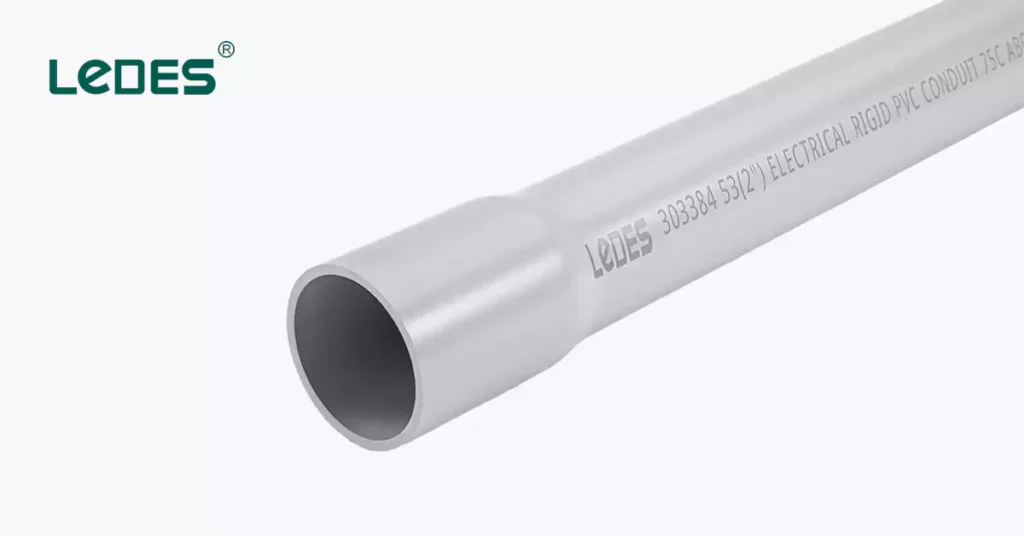
이 부분에서는 에너지 저장 시스템(ESS)에 대한 캐나다 전기 규정(CEC)의 전선관 요건에 대해 살펴보겠습니다. 에너지 저장 시스템(ESS)이 현대 전기 인프라의 필수적인 부분이 됨에 따라, 캐나다 전기 규정(CEC) 1부(CSA C22.1:21)는 이러한 설비 내 전선관 시스템에 대한 안전, 성능 및 규정 준수를 보장하기 위한 핵심 요건을 명시하고 있습니다. CEC 제64조 ESS 내 전기 도관 시스템 설치를 구체적으로 규정하며, 배선 보호, 화재 위험 최소화, 적절한 전기 접지 확보에 대한 세부 지침을 제공합니다. 이러한 표준을 준수하는 것은 안전뿐만 아니라 캐나다 규제 체계를 준수하기 위해서도 필수적입니다.
전문가 팁: 읽어보시기를 권장합니다 CEC에 대한 이 최고의 가이드, CEC의 주요 장을 선별하여 자세히 설명하는 이 책은 일반적인 전기 규정 준수 지침뿐만 아니라 CEC 2024 버전의 새로운 에너지 규정에 대한 업데이트 내용도 담고 있습니다.
ESS에 대한 CEC 섹션 64의 주요 요구 사항
다양한 전력 시스템을 위한 도관 시스템
에너지 저장 시스템은 다양한 구성으로 작동할 수 있으며, 각 구성에는 고유한 도관 및 보호 요구 사항이 있습니다.
DC 전용 시스템: 이러한 시스템은 오프그리드 태양광 또는 재생에너지 설비에서 흔히 볼 수 있으며, 고전압 직류 회로를 사용하는 경우가 많습니다. CEC는 특히 시스템이 직사광선이나 기타 기상 요인에 노출되는 외부 배선의 경우 자외선 차단 및 난연성 전선관 사용을 의무화하고 있습니다. 직류 회로용 전선관은 주변 환경에 위험을 초래하지 않으면서 고전압 및 잠재적인 전기적 고장을 처리할 수 있도록 신중하게 선택해야 합니다.
AC-DC 하이브리드 시스템: AC 회로와 DC 회로가 모두 통합된 설비(예: 계통 연계형 배터리 기반 ESS 시스템)에서는 회로 간 분리가 매우 중요합니다. 64절에서는 AC 및 DC 배선을 물리적으로 분리해야 한다고 규정하고 있으며, 일반적으로 별도의 도관이나 내부 분리대가 있는 도관을 사용합니다. 이 절에서는 회로 유형을 쉽게 식별할 수 있도록 색상으로 구분된 도관 시스템을 강조합니다.
다상 전력 시스템: 다상 AC 회로(예: 대규모 상업 시스템)를 사용하는 ESS 설비의 경우, 제64조는 전선관이 고전류 처리 및 열 성능에 충분한 정격을 가져야 함을 명시하고 있습니다. 과열이나 잠재적인 전기적 고장을 방지하기 위해 전선관 내 도체 간격에 특히 주의를 기울여야 합니다.
도관 선택
제64조는 에너지 저장 시스템 내부의 특수한 조건을 견딜 수 있도록 설계된 특정 도관 재료의 사용을 의무화하고 있습니다. 예를 들면 다음과 같습니다.
- 강성 도관 (예: 일정 40 또는 일정 80 PVC, 또는 RMC)는 물리적 손상으로부터 강력한 보호가 필요한 영역에 권장됩니다.
- 유연한 도관 (액체 밀폐형 또는 유연한 금속 도관 등)은 유연성과 이동에 대한 적응성이 요구되는 장소에서 사용될 수 있습니다.
- CEC에서는 전선관 재료가 UL 1685 또는 유사한 표준에 맞는 난연성 등급을 가져야 하며, 이를 통해 ESS 내부에서 발생하는 전기 화재에 견딜 수 있어야 한다고 규정하고 있습니다.
도관 크기 조정
안전하고 효율적인 케이블 설치를 위해서는 적절한 도관 크기가 중요합니다.
- 제64조에서는 전선이 과도한 응력을 받지 않고, 쉽게 유지관리하고 나중에 업그레이드할 수 있도록 전선관의 크기를 정해야 한다고 규정하고 있습니다.
- 핵심 요건은 케이블 과열이나 성능 저하를 방지하기 위해 적절한 도관 충진율을 사용하는 것입니다. CEC는 도관 과충전을 방지하기 위해 NEC 표 1에 명시된 표준을 준수합니다.
- 특히 극한 환경이나 간섭이 있는 구역을 통과하는 경우, 전선관 설치 시 적절한 여유 공간을 유지해야 합니다. 예를 들어, 특별히 허용된 경우를 제외하고 전선관은 다른 시스템과 직접 접촉하여 설치해서는 안 됩니다.
환경 고려 사항
CEC에서는 ESS의 도관 설치가 극한 온도, 습기, 자외선 노출과 같은 환경적 요인에 견딜 수 있어야 한다고 규정하고 있습니다.
- 자외선 저항성: 자외선 차단 PVC나 금속 도관과 같은 소재는 야외 설치에 필수적입니다. 자외선으로 인한 성능 저하로 인해 시간이 지남에 따라 도관 소재가 파손될 수 있기 때문입니다.
- 온도 등급: CEC는 ESS의 도관 시스템이 고전압 부하 또는 고장 모드 시 발생할 수 있는 고온을 견딜 수 있어야 한다고 규정합니다. 많은 시스템은 도관과 절연의 무결성을 보장하기 위해 최대 90°C(194°F) 이상의 온도를 견뎌야 합니다.
- 부식 저항성: 해안이나 산업 환경에 설치된 ESS의 경우, CEC에서는 소금, 화학 물질 또는 기타 부식성 요소에 노출되어 성능이 저하되는 것을 방지하기 위해 아연 도금 강철이나 스테인리스 강철과 같은 내식성 도관을 사용할 것을 권장합니다.
접지 및 본딩
ESS 설비에서는 오류 발생 시 안전을 보장하기 위해 적절한 접지 및 접합이 필수적입니다.
– 전선은 고장 전류를 분산시키고 잠재적인 감전 위험을 방지하기 위해 지면에 적절히 접합되어야 합니다.
– 섹션 64에서는 안전한 접지 경로가 필수적인 중요 ESS 애플리케이션에서 연속 용접 또는 나사산 도관을 사용하는 것의 중요성을 강조합니다.
– 이 규정은 비금속 도관을 사용하는 경우, 특히 고전력 시스템의 경우 도관 내부에 추가 접지 도체가 필요할 수 있다고 명시하고 있습니다.
전선관 설치 및 안전 조치
CEC 64조는 전기적 무결성과 인명 보호를 위해 전선관 시스템의 안전한 설치를 매우 강조합니다. 필수 요건은 다음과 같습니다.
- 도관 매설 깊이: 지하 케이블(매설 배터리 뱅크 또는 지하 설비 등)을 사용하는 ESS 시스템의 경우, 제64조는 우발적인 손상을 방지하기 위해 강성 전선관의 최소 매설 깊이를 규정합니다. 이 깊이는 일반적으로 토양의 종류와 환경 조건에 따라 결정되며, 통행량이 많거나 굴착 가능성이 있는 지역에는 더 깊은 매설이 필요합니다.
- 도관 밀봉: 습기가 침투하기 쉬운 구역에서는 섹션 64에 따라 배관을 밀봉하거나 방수 피팅을 장착하여 물이나 오염 물질이 시스템에 유입되는 것을 방지해야 합니다. 유입 시 배선이 단락되거나 저장 시스템이 손상될 수 있습니다.
- 내화성 및 난연성: ESS와 관련된 잠재적 과열, 배터리 오작동, 심지어 극단적인 경우 화재 발생 등 위험을 고려하여, 제64조는 ESS 설비에 사용되는 전선관 시스템은 반드시 내화성 재질로 제작되어야 함을 강조합니다. 이는 실내 및 실외 시스템 모두에 적용되며, 고위험 설비의 경우 전선관 또는 주변 자재의 추가적인 내화 처리까지 확대될 수 있습니다.
ESS에 대한 특별 고려 사항
ESS의 복잡성과 규모를 감안하면 추가적인 특정 요구 사항이 적용됩니다.
배터리 케이스: 배터리 인클로저를 고려하여 배관 시스템을 설치해야 하며, 환기 시스템 및 열 관리 기능에 방해가 되지 않도록 적절하게 배선해야 합니다.
에너지 관리 시스템: 에너지 관리 시스템(EMS) 또는 통합 스마트 그리드 기술이 사용되는 설비에서는 전선관이 전력선과 함께 데이터 및 통신 케이블을 지원해야 합니다. 64절에서는 간섭을 방지하기 위해 전력선과 통신선에 별도의 경로를 제공해야 할 필요성을 설명합니다.
비상 차단 시스템: 화재나 전기 고장 시 ESS를 종료하기 위한 현지 안전 기준을 준수하여, 전선 시스템은 비상 분리를 위해 명확하게 표시되고 접근 가능해야 합니다.
CEC 64절에 명시된 도관 요건은 에너지 저장 시스템 내 도관 시스템의 안전성, 효율성 및 신뢰성을 보장하도록 설계되었습니다. CEC는 재료 선택, 환경 저항성, 접지 및 설치 관행과 같은 요소를 다루어 ESS 설치 시 발생하는 고유한 문제를 해결할 수 있는 견고한 시스템을 구축하기 위한 명확한 프레임워크를 제공합니다. 이러한 표준을 준수하는 것은 장비와 인력을 보호하는 동시에 에너지 저장 시스템이 캐나다 규제 지침에 따라 안전하고 효과적으로 작동하도록 보장하는 데 필수적입니다.
AS/NZS 표준: 전력 저장 시스템에 대한 도관 요구 사항
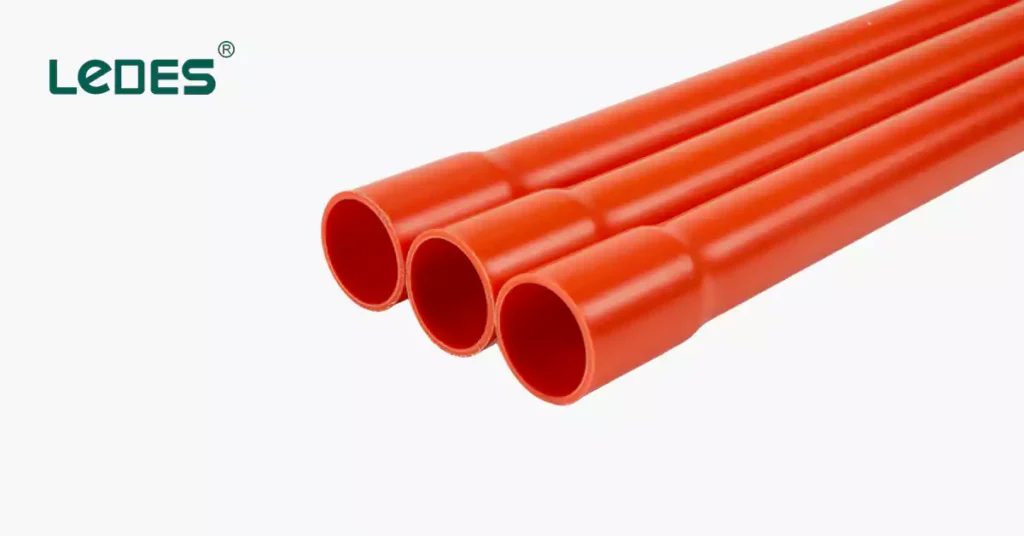
호주와 뉴질랜드에서는 에너지 저장 시스템(ESS) 설치 시 AS/NZS 3000:2018(전기 설비 - 배선 규칙) 및 AS/NZS 5139:2019(전력 변환 장비와 함께 사용하는 배터리 시스템의 전기 설비 - 안전)에 명시된 엄격한 안전 요건을 준수해야 합니다. 이러한 표준은 ESS 배선의 기계적 보호, 화재 안전, 분리 및 적절한 환경적 내구성을 보장하기 위해 전선관 사용에 대한 중요한 요건을 명시하고 있습니다.
AS/NZS 3000:2018 - 배선 및 도관 보호
AS/NZS 3000은 ESS 도관과 관련된 요구 사항을 포함하여 모든 전기 배선에 대한 일반적인 프레임워크를 제공합니다.
기계적 보호:
케이블은 외부 벽, 지하, 옥상 공간 또는 기계 근처 등 손상 위험에 노출된 장소에 설치할 경우 전선관이나 기타 적합한 인클로저로 보호해야 합니다.
도관 재료 선택:
배관은 환경적 요인에 따라 선택해야 합니다.
자외선 노출: 실외에서는 자외선 차단 전선을 사용해야 합니다.
온도 저항성: 성능 저하 없이 작동 온도 변화를 견뎌야 합니다.
내화학성: 공격적인 환경에서는 도관이 화학 물질과 습기에 강해야 합니다.
AC 및 DC 시스템의 분리:
AC 및 DC 배선은 전자파 간섭 및 안전 위험을 방지하기 위해 장벽, 분리된 도관 또는 충분한 물리적 간격으로 분리해야 합니다.
굽힘 반경 및 케이블 관리:
전선관 굽힘은 손상을 방지하기 위해 둘러싸인 케이블 직경의 최소 6배의 내부 굽힘 반경을 유지해야 합니다.
지하 배선 보호:
지하 배관은 토양 압력과 부식에 견딜 수 있어야 하며, 기계적 보호 장치(배관이나 가선)를 추가하지 않는 한 케이블은 최소 깊이(일반적으로 고위험 지역의 경우 500mm)로 매설해야 합니다.
금속 도관의 접지:
금속 도관을 사용하는 경우, 고장 조건에서 안전하게 분리할 수 있도록 접합 및 접지해야 합니다.
특정 배터리 저장 시스템 - AS/NZS 5139:2019
AS/NZS 5139:2019는 주거용, 상업용 및 공공 시설용 재생 에너지 솔루션에 점점 더 중요해지고 있는 배터리 에너지 저장 시스템(BESS)의 안전한 설치에 중점을 두고 있습니다. 이 표준은 화재 및 아크 위험이 상당히 높은 배터리 시스템의 DC 측면에 특히 중점을 둡니다.
AS/NZS 5139에 따른 주요 도관 관련 요구 사항은 다음과 같습니다.
DC 케이블 보호:
배터리와 전력 변환 장비(PCE) 간의 DC 케이블은 기계적 손상, 화재 또는 전기적 결함 전파의 위험을 최소화하기 위해 견고한 도관에 넣거나 적절한 인클로저에 배치해야 합니다.
도관 의무 등급:
도관 UV 및 외부 내구성:
DC 케이블을 야외에 설치하는 경우 전선관은 자외선 차단 기능이 있어야 하며 고온, 습기, 잠재적인 기계적 응력을 포함한 해당 지역의 환경 조건에 맞게 평가되어야 합니다.
라벨링 요구 사항:
DC 전선관은 길이를 따라 최소 2m마다 "배터리 DC 회로" 또는 이와 유사한 내용으로 명확하게 표시되어야 하며, 이를 통해 안전성과 유지 관리 효율성을 모두 향상할 수 있습니다.
DC 및 AC 회로의 분리:
DC 및 AC 회로용 케이블은 적절한 절연 및 분리 조치를 적용하여 서로 다른 전기 시스템을 안전하게 분리하지 않는 한 동일한 전선관 시스템 내에 수용해서는 안 됩니다.
AS/NZS 3000은 모든 전기 시스템에 걸쳐 안전한 전선관 설치를 위한 일반적인 프레임워크를 제공하는 반면, AS/NZS 5139는 배터리 저장의 고유한 위험, 특히 DC 케이블 취급과 관련된 위험에 초점을 맞춥니다. 설치자는 규정 준수, 안전 및 시스템 복원력을 확보하기 위해 두 가지 요건을 모두 충족해야 합니다.
IEC 표준 - 에너지 저장 시스템을 위한 도관 고려 사항
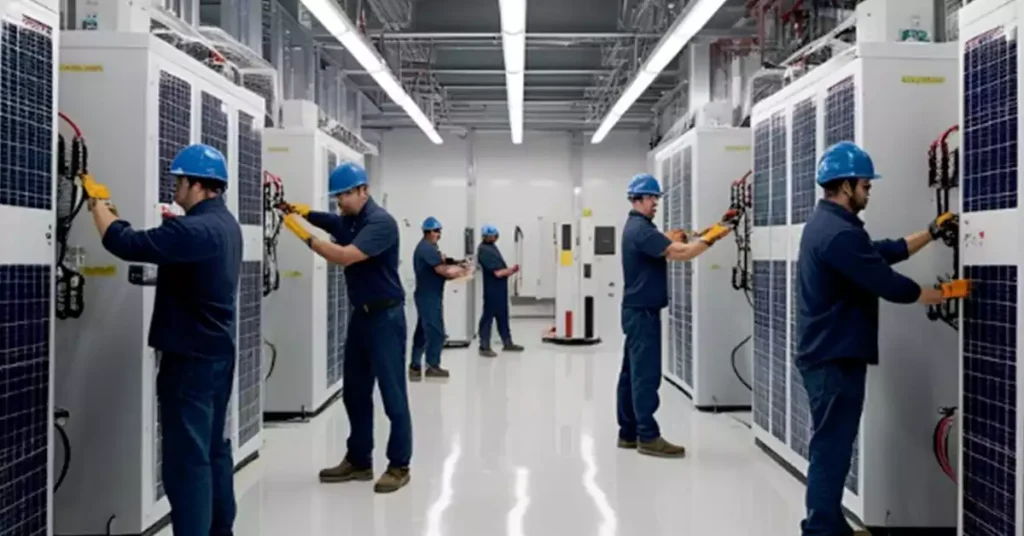
여러 지역에서 국제전기기술위원회(IEC)는 에너지 저장 시스템용 도관 시스템을 포함하여 전기 안전 및 시스템 통합에 대한 기본 표준을 제공합니다. 특히 두 가지 주요 IEC 표준인 IEC 62933과 IEC 60079-14가 관련성이 높습니다.
IEC 62933 시리즈
특히 IEC 62933 시리즈 IEC 62933-5-1:2024 – 전기 에너지 저장(EES) 시스템 – 그리드 통합 EES 시스템에 대한 안전 고려 사항 – 일반 사양, 전기 인프라를 포함한 전체 에너지 저장 설비의 안전 관련 요구 사항에 대한 토대를 마련합니다.
이 규정은 전선관 사양을 자세히 규정하지는 않지만, 전선관 선택 및 설치에 직접적인 영향을 미치는 일반적인 안전 원칙을 수립합니다.예를 들어,
- 단락, 화재 및 아크 고장에 대한 보호: ESS 설비에 사용되는 전선관은 효과적인 절연과 전기적 도체의 물리적 분리를 지원해야 합니다.
- 환경 보호: 전선관을 포함한 배선 시스템은 야외 또는 산업용 보관 분야에서 흔히 발생하는 극한 온도, 습도, 진동 및 부식 조건에 적합해야 합니다.
- 접근성 및 유지 관리성: 배관 경로는 시스템 무결성을 손상시키지 않으면서 검사 및 유지 관리를 위한 안전한 접근을 허용해야 합니다.
- IEC 60364(저전압 설비) 준수: IEC 62933에서는 전선관 및 케이블 시스템이 기계적 보호, 내화성, 안전한 케이블 경로를 포함하는 IEC 60364의 관련 부분을 준수하도록 요구합니다.
따라서 IEC 62933은 전선관 시스템이 신뢰성, 열 내구성, 기계적 보호를 고려하여 계획되어야 하는 안전 범위를 제공합니다.
IEC 60079-14: 위험 대기의 도관 시스템
수소 연료 전지를 사용하거나 가연성 가스 또는 증기가 있는 산업 구역에 위치한 위험 환경에 설치된 에너지 저장 시스템의 경우, IEC 60079-14가 필수적입니다. "폭발성 환경 - 제14부: 전기 설비 설계, 선정 및 설치"라는 제목의 이 표준은 위험 구역(예: 구역 1 및 구역 2)으로 분류된 전선관 요건을 설명합니다.
주요 도관 관련 주요 내용은 다음과 같습니다.
방염 및 방폭: 배관 시스템은 구역 분류에 따라 방염(Ex d) 또는 안전 강화(Ex e) 보호 방법과 호환되어야 합니다.
인증된 밀봉 방법: 가스가 배관을 통해 이동하는 것을 방지하기 위해 경계에는 밀봉 피팅이나 차단 글랜드를 사용하는 것이 필수입니다.
침투 보호(IP 등급): 폭발성 환경에서 먼지와 습기의 유입을 견딜 수 있도록 전선관과 부속품은 최소 IP 등급(일반적으로 IP54~IP66)을 준수해야 합니다.
재료 선택: IEC 60079-14는 휘발성 환경에서 안전을 보장하기 위해 일반적으로 금속이나 특수 열가소성 플라스틱과 같은 비발화성, 내식성 도관 재료의 사용을 규정합니다.
IEC 62933과 IEC 60079-14는 국제 에너지 저장 시스템 구축을 위한 포괄적인 프레임워크를 형성하며, 일반적인 시스템 안전 요건과 특수 위험 장소 요건을 모두 충족합니다. 다국적 또는 수출용 ESS 프로젝트를 수행하는 설계자와 계약자의 경우, 이러한 표준에 맞춰 배관 인프라를 구축하면 규정 준수와 장기적인 시스템 신뢰성을 모두 확보할 수 있습니다.
ESS의 도관 설치를 위한 모범 사례
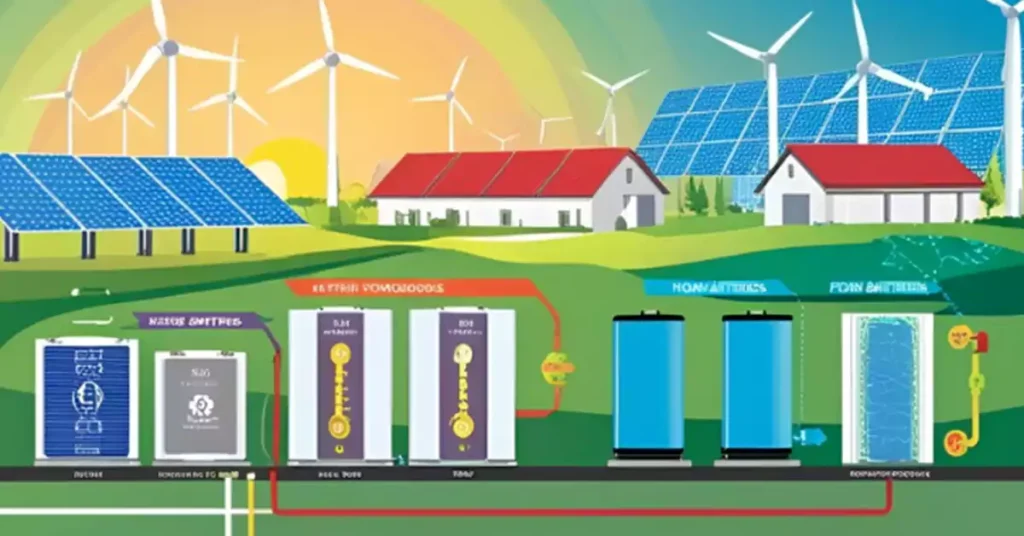
에너지 저장 시스템(ESS)이 현대 전력 인프라에서 점점 더 중요해짐에 따라, 보호 백본으로서 전기 도관의 역할은 아무리 강조해도 지나치지 않습니다. 가정용 배터리 시스템, 상업용 백업 저장 장치 또는 유틸리티 규모 설비 등 어떤 용도로 사용되든, 도관은 엄격한 성능, 안전 및 규제 요건을 충족하도록 선택 및 설치되어야 합니다. 이 섹션에서는 주요 국제 표준(NEC, CEC, AS/NZS, IEC)의 지침을 반영하여 ESS 애플리케이션의 도관 설치 모범 사례 원칙을 설명합니다.
기계 및 환경 보호
ESS 설비의 도관은 다음으로부터 케이블을 보호해야 합니다.
물리적 손상: 특히 유지 관리 활동이나 중장비에 노출된 장소에서 그렇습니다.
환경적 위험: 습기, 자외선, 화학물질, 극한 온도 등이 포함됩니다.
PVC 도관은 햇빛에 강해야 하며(SUN RES 표시) 예상 온도에 맞게 정격이 지정되어야 합니다.
부식성 또는 습한 환경에서 사용하는 금속 도관은 부식 방지 처리가 되어 있거나 코팅이 되어 있어야 합니다.
적절한 도관 크기 및 굽힘
도관 충전 용량 열 방출과 케이블 당김의 용이성을 위해 지정된 한도를 초과해서는 안 됩니다.
NEC와 IEC는 3개 이상의 도체에 대해 40%로 충전을 제한합니다.
최소 굽힘 반경 절연 손상을 방지하기 위해 도체 크기에 따라 관찰해야 합니다.
점진적으로 사용하세요 굽힘 또는 공장 스윕 배터리 시스템 도체에는 종종 대구경 케이블이 포함됩니다.
회로 유형 및 전압 레벨 분리
전자파 간섭(EMI)을 방지하고 시스템 안전성을 높이기 위해 AC 및 DC 회로는 별도의 도관에서 실행하거나 인클로저 내에서 물리적으로 분리해야 합니다.
저전압 제어 케이블은 전력 케이블과 함께 묶어서는 안 됩니다.
특별히 허용된 경우가 아니면 서로 다른 전압 등급의 회로는 동일한 도관을 공유해서는 안 됩니다.
접지 및 본딩
금속 도관 (예: RMC, EMT)는 고장 전류 경로를 보장하기 위해 접지 시스템에 적절하게 접합되어야 합니다.
비금속 도관 시스템 전류용량에 따라 크기가 다른 별도의 접지 도체가 필요합니다.
특히 고전압(예: 100~1000V DC)을 사용하는 DC 시스템의 전선관은 안전하고 연속적인 접합 연결이 필요합니다.
설치 지원 및 보안
전선은 전선 유형에 따라 일정한 간격으로 지지되어야 합니다.
응급구조사: 울타리로부터 3피트(900mm) 이내 및 10피트(3m)마다.
PVC: 상자로부터 3피트 이내, 그리고 3피트에서 6피트(크기에 따라 다름)마다.
온도 변화에 영향을 받는 열가소성 도관(PVC 등)에는 팽창 피팅을 포함해야 합니다.
습기 차단 및 침투 방지
습한 곳이나 실외의 인클로저에 들어가는 배관은 승인된 방수 피팅을 사용하여 밀봉해야 합니다.
지하 경주로는 콘크리트에 직접 매설하거나 둘러싸는 데 적합한 도관과 부속품을 사용해야 합니다.
홍수 발생 위험이 있는 지역의 경우, 배터리 케이스로 물이 유입되는 것을 방지하기 위해 도관 밀봉과 지상 진입 지점을 반드시 설치해야 합니다.
케이블 식별 및 라벨링
모든 전선 시스템에는 회로 기능(AC, DC, 제어), 전압 등급, 극성(해당되는 경우)을 명확하게 표시해야 합니다.
특히 야외 ESS 애플리케이션에서는 UV 및 날씨에 강한 색상으로 구분되거나 태그가 붙은 라벨을 사용하세요.
잘 설치된 도관 시스템은 모든 전력 저장 시스템의 구조적 및 안전 기반을 형성합니다. 화재, 부식, EMI 또는 기계적 손상으로부터 보호하는 등, 국제 및 국가 표준에 기반한 적절한 설치 관행은 장기적인 성능 및 규정 준수에 필수적입니다. 이러한 모범 사례를 따르면 규정 준수뿐만 아니라 전체 에너지 저장 수명 주기에 걸쳐 시스템 효율성, 서비스 가능성 및 안전성이 보장됩니다.
ESS의 안전 규정 준수 모범 사례 - 7가지 팁
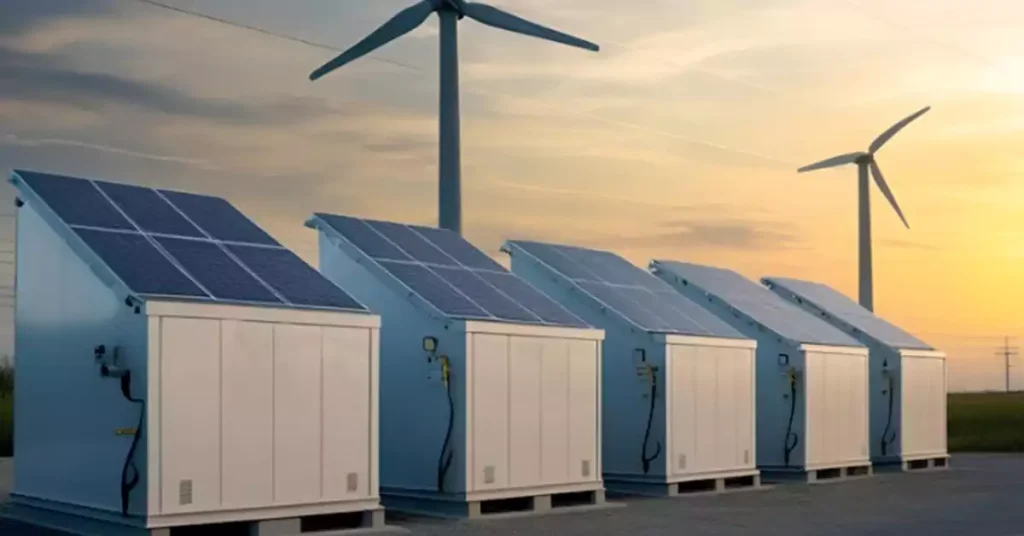
안전은 모든 에너지 저장 시스템(ESS) 설계의 핵심이며, 도관 설치는 전기 도체의 안전한 배선 및 보호를 보장하는 데 중요한 역할을 합니다. 배터리 기술이 발전하고 저장 시스템의 규모와 복잡성이 커짐에 따라 안전 규정 준수의 중요성이 더욱 커지고 있습니다.
올바른 표준을 따르세요
모든 ESS 설치는 해당 지역의 전기 규정 및 제품 또는 설치별 추가 표준을 준수해야 합니다. 여기에는 다음이 포함될 수 있습니다.
NEC(NFPA 70) 미국에서는 특히 제706조와 제690조가 그렇습니다.
CEC 섹션 64 캐나다에서.
AS/NZS 3000 및 5139 호주와 뉴질랜드에서.
IEC 60364 시리즈 및 IEC 62933 국제 설비용.
각 표준은 허용되는 재료, 접지, 배선 방법, 환경 등급, 물리적 보호 수준 등의 도관 요구 사항을 정의합니다.
승인 및 정격된 도관만 사용하십시오.
모든 도관, 부속품, 상자 및 부속품은 UL/CSA 인증을 받았고, AS/NZS 인증을 받았으며, 해당 지역의 IEC 또는 기타 표준을 준수해야 합니다.
예를 들어, 야외, 부식성 환경 또는 위험한 장소 등의 적용 분야에 맞게 평가되었습니다.
적절한 접지 및 접합을 보장하세요
접지는 고장 보호에 필수적이며, 특히 금속 도관(EMT, IMC, RMC)을 사용하는 경우 더욱 그렇습니다.
비금속 도관에는 현지 규정에 따라 크기가 정해진 내부 접지 도체가 필요합니다.
모든 전도성 인클로저와 장비를 접지 시스템에 다시 연결하여 저임피던스 오류 경로를 생성합니다.
내화성 유지
에너지 저장 시스템에 사용되는 도관은 높은 난연성 등급을 가져야 합니다.
UL 94 V-0 또는 5VA 비금속 도관 재료용.
또는 사용 저연성 무할로겐(LSZH) 도관 배터리실이나 지하 시설과 같은 밀폐된 환경.
과열 방지 및 도체 정격 감소
제한된 공간에 여러 개의 전류를 전달하는 도체가 있는 전선 시스템은 과열을 방지하기 위해 전류 용량을 감소시켜야 합니다.
NEC와 IEC는 모두 동일한 배선로에 3개 이상의 도체를 설치할 경우 정격 감소 조정을 요구합니다.
주변 온도가 높은 곳에서는 금속 도관이나 내열 PVC를 사용하세요.
유지 관리, 접근성 및 향후 확장
안전한 검사와 유지관리를 위해 접근 가능한 당김 지점과 접속함을 설치합니다.
AC/DC 회로, 전압 등급 및 식별을 위해 적절한 전선 라벨을 유지하세요.
미래의 용량 업그레이드를 수용할 수 있는 설계 시스템을 구축하여 과밀을 피하고 방해를 최소화합니다.
설치 문서화 및 검사
전선관 경로, 연결, 도체 경로를 정확하게 반영하는 도면을 제공합니다.
전원을 공급하기 전에 시각적 및 기계적 검사를 실시하십시오.
견고한 연결, 기계적 응력 완화, 접지 연속성 및 적절한 밀봉을 점검하세요.
많은 관할권에서는 제3자 검사와 최종 승인도 요구합니다.
Ledes Solutions - 에너지 저장 시스템용
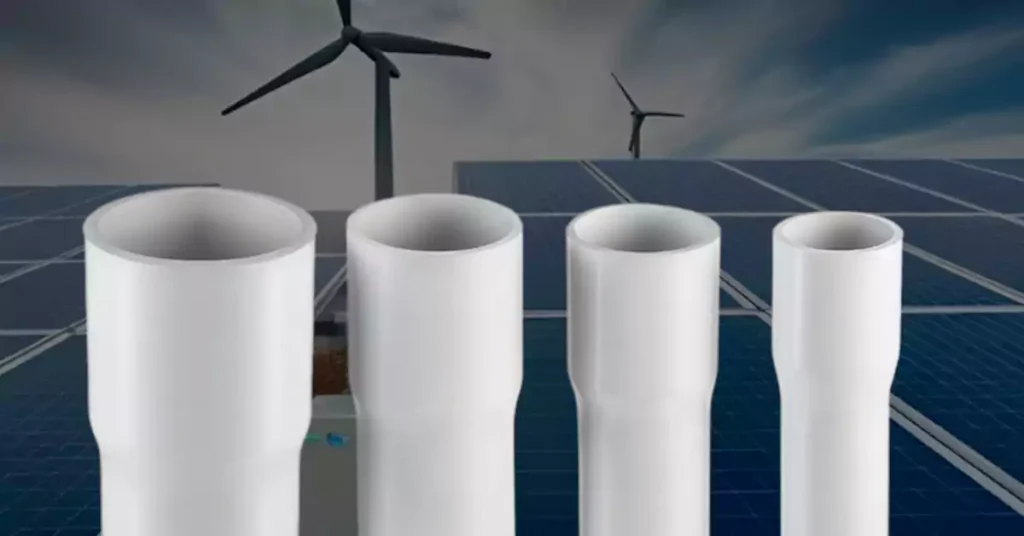
신뢰할 수 있는 전선관 제조업체인 Ledes는 오늘날 ESS 프로젝트의 기계적, 열적, 화학적, 내화성 요구 사항을 충족하도록 설계된 포괄적인 규정 준수 전선관 제품을 제공합니다. 실내, 실외, 지하 또는 유틸리티 규모 배터리 뱅크나 옥상 시스템과 같은 까다로운 환경에 설치하든 상관없습니다.
제품 범위:
강성 PVC 도관
UL 및 CSA에 등록되어 있으며, 일정 40 및 일정 80에서 사용 가능합니다.
난연성, 햇빛 차단성, 부식 방지 기능이 있습니다.
미국(NEC), 캐나다(CEC) 및 국제 표준과 호환됩니다.
가볍고 유연하며 좁거나 복잡한 통로에도 쉽게 설치할 수 있습니다.
난연성이 뛰어나 콘크리트 슬래브, 벽체, 천장에 사용하기 적합합니다.
UL 1653, CSA C22.2 No. 227.1 및 기타 주요 규정을 충족하도록 설계되었습니다.
화재 안전과 낮은 독성이 필수적인 환경(예: 밀폐된 배터리실이나 공공 인프라)을 위해 개발되었습니다.
UL 94 V-0 / 5VA 가연성 등급을 받았으며 IEC 60754 및 ASTM E662 표준에 따라 테스트되었습니다.
중간 및 중량 옵션으로 제공되며, 단단하고 골판지 시스템에 적합합니다.
전선관 부속품
Ledes는 도관 시스템을 보완하기 위해 다음과 같은 서비스도 제공합니다.
어댑터 및 커넥터(나사-일반, 골판지-나사, 단자 피팅 포함).
벨 끝이 있거나 없는 90° 및 45° 변형을 포함한 검사용 벤드 및 엘보우.
완벽한 회로 무결성과 기계적 보호를 보장하는 U 클립, 접속함 및 커플링.
품질, 안전 및 지속 가능성에 대한 약속
Ledes는 품질 보증과 환경적 책임에 깊이 헌신하고 있습니다.
- 모든 제품은 충격 강도, 압축, 가연성, 열 성능에 대한 엄격한 테스트를 거칩니다.
- 제조업체는 ISO 9001:2015를 준수하며 납, 카드뮴, 수은과 같은 유해한 중금속이 없는 6P 환경 표준을 지원합니다.
- LSZH 옵션은 현대 에너지 인프라에서 친환경 건물 인증과 향상된 방화 전략에 기여합니다.
에너지 저장 시스템의 미래 동향
재생에너지로의 전 세계적 전환은 에너지 저장 시스템(ESS)을 새로운 에너지 경제의 초석으로 자리매김했습니다. 공공시설용 배터리 저장 시스템, 가정용 에너지 시스템, 그리고 마이크로그리드가 더욱 보편화됨에 따라, 전선관을 포함한 이를 지원하는 인프라 또한 이에 맞춰 변화해야 합니다. 앞으로 ESS와 전선관 기술은 기술, 규제, 그리고 지속가능성의 발전에 따라 함께 발전할 것입니다.
ESS 산업 성장 및 다각화
탈탄소화 목표, 전력망 복원력 요구, 그리고 전기 이동성에 힘입어 글로벌 ESS 시장은 2030년까지 4,000억 달러를 넘어설 것으로 예상됩니다. 주요 동향은 다음과 같습니다.
모든 부문에서 더 폭넓은 채택: ESS는 더 이상 공공 시설 규모에만 국한되지 않습니다. 상업용 건물, 전기차 충전소, 데이터 센터, 심지어 주택까지 에너지 저장 시스템을 통합하고 있습니다.
더 긴 기간의 보관: 리튬 이온 배터리 외에도 유동 배터리, 고체 배터리, 수소 저장과 같은 기술이 수 시간에서 수 일간 지속되는 성능으로 주목을 받고 있습니다.
규제 주의 강화: 당국은 배관을 포함한 설치 환경과 인프라에 영향을 미치는 안전, 화재 및 성능 규정을 강화하고 있습니다.
더욱 스마트하고 데이터 기반 컨듀트 인프라
ESS가 실시간 데이터와 원격 시스템을 통해 점점 더 모니터링되고 제어됨에 따라, 이러한 디지털 전환에 맞춰 배관 솔루션도 발전해야 합니다.
전력 및 데이터 공동 라우팅을 위한 도관: Systems will require conduit solutions that can house both electrical and communication cables, especially in smart grid and BESS installations.
Integration with IoT and EMS: Future conduit systems will support embedded sensors or smart tags for monitoring temperature, moisture, or cable integrity inside the conduit.
전문가 팁: If you pay attention to the data center industry, you will definitely know that the current data center has a very high demand for electricity. With the continuous development of AI, data center security issues have become a huge challenge. To this end, we have detailed the analysis of data center conduit requirements and purchase recommendations, you can go and read it.
Enhanced Fire Safety and Risk Mitigation
With high-energy battery systems, fire risk management is critical. As a result:
- Low Smoke Halogen-Free (LSZH) and fire-rated conduit systems will become the industry standard, particularly in enclosed or occupied spaces.
- Conduit designs will need to support DC-specific safety requirements, including heat dissipation, arc resistance, and separation of circuits.
- More projects will adopt sealed or liquid-tight conduit systems to prevent ingress of water, gases, or fire accelerants in high-risk environments.
Sustainability and Circularity in Material Design
Environmental responsibility is now a central pillar in energy projects. Expect:
- Eco-designed conduit systems with reduced carbon footprint, made from recyclable and lead-free PVC or LSZH materials.
- Conduit manufacturers to align with green building certifications like LEED and Green Star, and comply with international sustainability benchmarks such as RoHS, REACH, and 6P environmental standards.
결론
As Energy Storage Systems (ESS) continue to reshape the global energy landscape, electrical conduit systems play a crucial role in enabling safe, reliable, and compliant installations.
From understanding the core types of conduit and their functions, to dissecting the NEC, CEC, AS/NZS, and IEC standards governing their application in ESS environments, one message is clear: conduit design and selection must be intentional, standards-driven, and future-ready. And installation and safety compliance both are vital in battery-dense environments where fire risk, high voltage, and thermal performance are mission-critical concerns.
As ESS technologies evolve to support everything from EV charging stations to grid stabilization, conduit systems must evolve in parallel, becoming smarter, safer, and more sustainable. Understanding this synergy is key to building energy infrastructure that not only performs today but endures tomorrow.
자주 묻는 질문:
Why Is Electrical Conduit So Important in Power Storage Systems?
Electrical conduit provides critical protection and organization for the wiring infrastructure in ESS installations. These systems often handle high-voltage, high-current DC and AC circuits, which demand robust containment to prevent electrical shock, fire hazards, and mechanical damage. Conduit also ensures compliance with national and international codes, enhances system longevity, and helps maintain system reliability and serviceability in harsh or sensitive environments.
Why is conduit separation important in ESS installations?
Proper separation of power, control, and communication cables minimizes the risk of interference, short circuits, and overheating, especially where high-voltage DC and AC circuits coexist. Most standards mandate physical barriers or spacing between circuit types.
Can flexible conduits be used in power storage systems?
Yes, but only where allowed by code and within certain environmental and mechanical stress limits. For instance, liquid-tight flexible metal conduit (LFMC) may be used in areas prone to moisture or vibration, while corrugated LSZH conduits are ideal for fire-prone environments.
How does conduit material affect thermal management?
Conduit materials can either retain or dissipate heat. Metal conduits may help with heat dissipation but require grounding; PVC insulates but may trap heat if not properly ventilated. Thermal performance is a growing consideration, especially in lithium-ion battery environments.
참고문헌:


